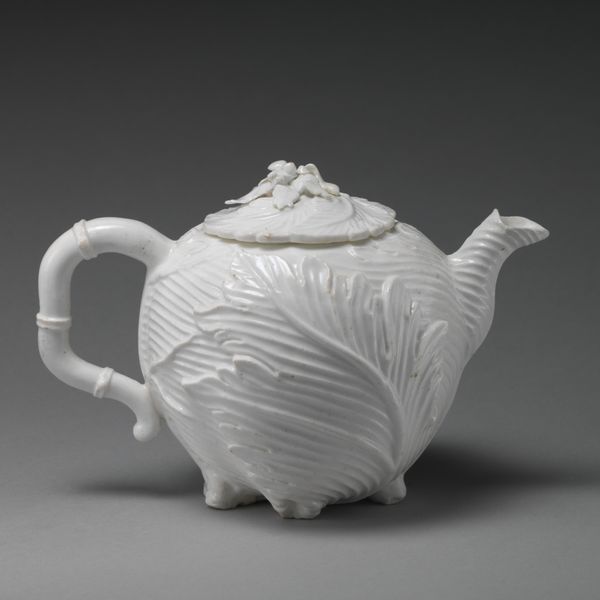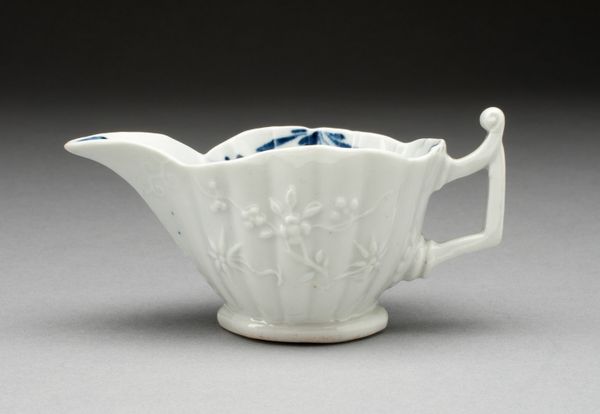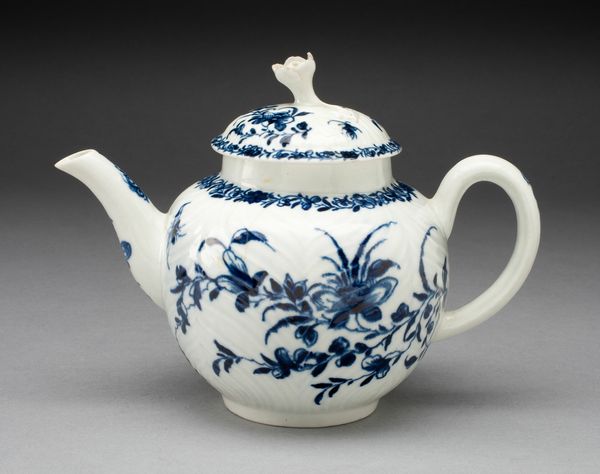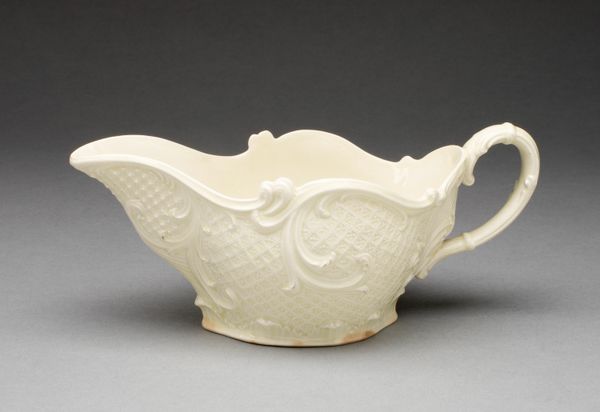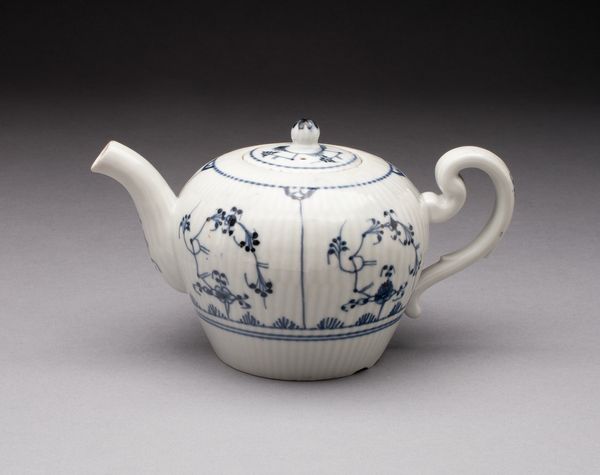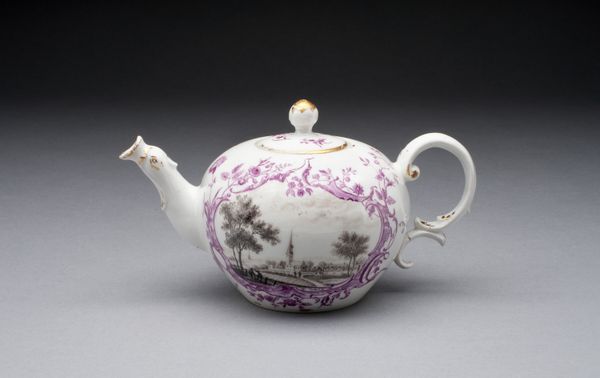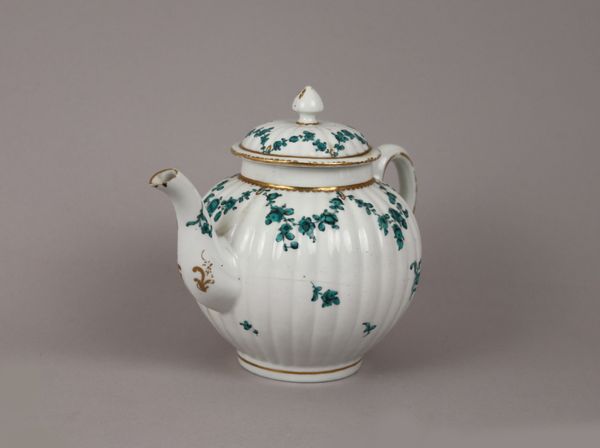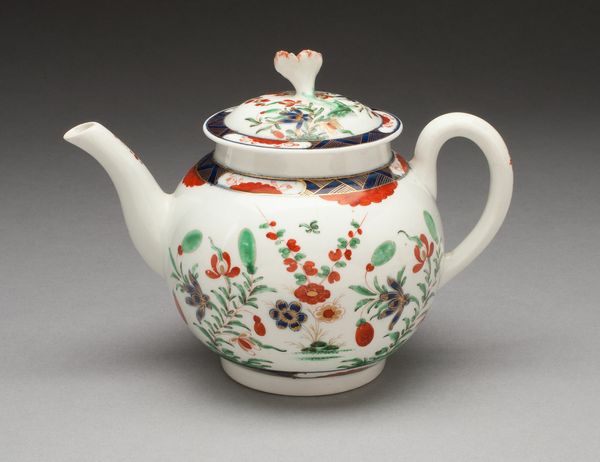
ceramic, porcelain
#
ceramic
#
porcelain
#
figuration
#
ceramic
#
decorative-art
#
rococo
Dimensions: 5.6 × 10 × 10.2 cm (6 1/8 × 3 15/16 × 4 in.)
Copyright: Public Domain
Editor: Here we have a porcelain teapot, crafted by the Chelsea Factory sometime between 1747 and 1749. It’s currently held in the Art Institute of Chicago. It’s pure white, and formed to look like a head of cabbage, which is quite striking. What do you see when you look at this piece? Curator: I see the rococo obsession with natural forms. More than that, though, it's an act of transubstantiation. Do you see how it takes the humble cabbage, a food of the common people, and elevates it into a delicate, precious object? It speaks volumes about the social hierarchies of the time. What do the veined leaves evoke for you? Editor: I immediately thought of the delicate, painstaking labour that must have gone into shaping those veins. But I never would have considered how a common vegetable is being transformed into something precious, that’s insightful. Curator: Precisely. The transformation from utilitarian vegetable to art object reflects a broader societal aspiration. Everyday life and common things were being idealized into fantasy and playfulness for aristocratic taste. In that light, how does this whimsical vessel speak to the cultural memory of luxury and refinement? Editor: Well, knowing that it was intentionally transforming the commonplace for aristocratic sensibilities certainly makes it feel less frivolous. I’m interested in how simple things become cultural symbols that speak of social class, power, and identity. Curator: Indeed. Everyday items carry hidden stories. I hope now you recognize them, too!
Comments
No comments
Be the first to comment and join the conversation on the ultimate creative platform.
